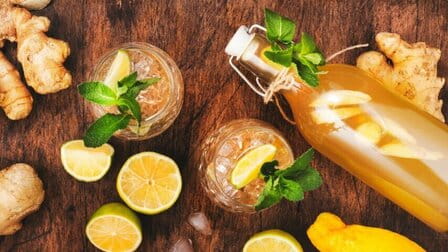Beer is one of the world's most popular alcoholic beverages, and the two main categories of beer are ales and lagers. While there are many styles within each category, understanding the key differences between ales and lagers can help you better appreciate and select different types of beer.
How Ales and Lagers Are Brewed
The main difference between ales and lagers is how they are fermented.
- Ales are fermented with top-fermenting yeast at warmer temperatures, usually between 60-75°F. The yeast rises to the surface during fermentation, and fermentation happens faster - usually within 7-10 days. This warmer, faster fermentation produces more esters and phenols, creating fruitier and more robust flavors.
- Lagers are fermented with bottom-fermenting yeast at much colder temperatures, around 48-58°F. The yeast settles at the bottom during fermentation, and the process happens slower - usually taking 3-4 weeks. The cooler fermentation produces cleaner, crisper flavors.
After initial fermentation, lagers are also aged cold for weeks or months, allowing the flavors to further mature and mellow. This is called "lagering."
Flavor Profiles of Ales vs. Lagers
Due to the differences in yeast and fermentation, ales and lagers generally have distinct flavor profiles:
- Ales tend to have more complex, robust, and fruity flavors from the esters produced during warm fermentation. They can taste hoppier with notes like pine, citrus, tropical fruit.
- Lagers tend to have cleaner, crisper, more subtle flavors with low esters and bitterness. They often taste malty, breezy, or slightly sweet. Pilsners are a very common type of pale lager.
However, there are many exceptions within ale and lager styles. For example, wheat ales can taste quite light and citrusy while dark lagers like bocks can have rich, malty flavors.
Popular Styles of Ales and Lagers
Some well-known ale styles include:
- India Pale Ales (IPAs)
- Pale Ales
- Amber/Red Ales
- Brown Ales
- Porter and Stout
- Wheat Beers
- Belgian Ales
- Fruit and spice beers
- Pilsner
- Amber Lagers
- Bock
- Märzen/Okoberfest Beers
- Dunkel
- Doppelbock
- Schwarzbier
- Helles
There are endless variations within both categories created by brewers around the world. Be adventurous and sample different styles to appreciate the range of flavors possible with ales and lagers.
Pairing Food with Ales and Lagers
Ales and lagers pair well with different foods based on their flavors and body:
- Ales tend to have more robust flavors that can stand up to bold foods like burgers, pizza, and heavy meals. Their carbonation and bitterness also helps cut through fat and salt. Pale ales work well with fried food, chicken, and seafood.
- Lagers have more subtle, light flavors that pair well with lighter fare like salads, grilled vegetables, fish and shellfish. The crispness of lagers contrasts nicely with creamy cheeses and dips. Pilsners go great with fresh seafood and brick oven pizza.
There are always exceptions, so feel free to break "rules" and experiment with pairings you think could work!
How to Tell Ales and Lagers Apart Visually
If you're unsure if a beer in front of you is an ale or lager, here are some visual cues:
Ales
- Cloudier, hazy appearance
- Thicker, creamier head
- Darker color, especially with stouts and amber/brown ales
Lagers
- Very clear, light golden color
- Thinner, bright white foam head
- Smooth clarity without haze or particles
These are general rules - some lagers can be dark and some ales can be relatively clear. When in doubt, just ask what style it is!
Conclusion
Whether you prefer the complex fruitiness of ales or the clean drinkability of lagers, understanding the key brewing differences will help you appreciate the diversity of flavors among beers. With so many styles to explore within both categories, approach each new beer with an open mind and curiosity. The fun is in the discovery - cheers!















